Sakura Wars (2019) Review
Lauded for its technological ambition in storytelling, the original Sakura Wars release in 1996 on the Sega Saturn was a surprise hit that captured the hearts of Japanese players nationwide. It blossomed into a multimedia phenomenon for many years to come; you name it and Sakura Wars probably had it - game sequels, remasters, remakes, spin-offs, anime, manga, stage plays, a ton of merch, and so on. The Sakura Wars series fulfilled the dream of allowing players to, basically, be the star of an anime show. These games were a beautiful hybrid between an adventure game, a visual novel, and a RPG. They were often more than the sum of their parts and possessed a certain unique charm to them.
Sakura Wars’ presence in the west has sadly always lacked. There were hopes to eventually localize earlier entries officially, but those were crushed as the popularity of the series was already on the decline by the time Sakura Wars V: So Long, My Love rolled around in 2005 for Japan. It also didn’t help that Sakura Wars V was the only mainline Sakura Wars game to receive an English release outside of Japan - and that took a lengthy five years to even bear fruit as it released on the PS2 and Wii in 2010.
Even then, there was a messy situation with its distribution as the PS2 version had a separate second disc serving as a Japanese voice option, while the Wii version only offered English voices; names for a lot of characters were completely changed in the versions with English voices too, while the lone PS2 second disc with the Japanese voices kept the original names intact. It certainly wasn’t one of the series’s finest moments and unfortunately, that was its first impression in the west as far as its games were concerned. Meanwhile, its numerous anime adaptations were able to find an audience in the west, but it’s undeniable that the Sakura Wars series lacked a strong presence in the west compared to the success it enjoyed in Japan.
Many years later, Sega has decided to give the Sakura Wars series another shot. This newest iteration was titled Shin Sakura Taisen (New Sakura Wars, if translated literally) in Japan and simply Sakura Wars in the west. In order to make things less confusing, I’ll take the liberty of referring to the newest title as Sakura Wars (2019) for this review because it initially came out for Japan in December 2019.
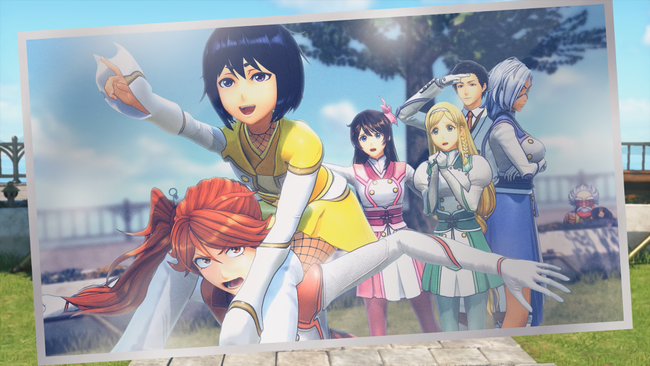
While Sakura Wars (2019) is positioned as a soft reboot for the franchise, it is not a remake or remaster of the first Sakura Wars; it is an entirely new entry with a new cast and a new story. It takes place 12 years after Sakura Wars V, but new players don’t have to worry about playing the older games to understand and enjoy Sakura Wars (2019). With that said, I have a lot of history with this series and the newest one tugged on my heartstrings many times. Some things have changed, yet it still hits me in the right ways.
Its initial premise is reminiscent of the first Sakura Wars. Players take control of Seijuro Kamiyama on his transfer to Tokyo as a recruit for the Imperial Combat Revue. He’s not entirely sure why he’s there in the first place and he’s ultimately tasked with leading the somewhat defunct task force. Things have been in a sorry state for the revue as their stage plays in the once great Grand Imperial Theater are now a mere trivial laughingstock and their duties to protect the city from demons have been relegated to the Shanghai Combat Revue in their absence. Sakura Wars games love their underdog stories and Sakura Wars (2019) is no different.

The most interesting wrinkle throughout Sakura Wars (2019) is how it wrestles with itself in chasing the shadow of its legacy as a series; there are moments in it that are beamingly self-aware - almost cruelly to a fault.
While almost the entire cast in Sakura Wars (2019) is brand-new, the Grand Imperial Theater space you inhabit for most of the game is not. It’s a landmark in RPG history that contains annals of the people that used to live there. For series veterans that have seen this place in the older games or anime adaptations, there’s a rather fond indescribable feeling to seeing it rendered on a 1:1 scale and scampering around to see how certain rooms now look on modern graphics. It’s a bit like visiting a past home you haven’t seen in years now enhanced with a splash of new paint and decor, but you still notice a minuscule mark or scratch on the wall that you made from the corner of your eye.
Of course, Sakura Wars newcomers may not pick up every nook and cranny like that in the Grand Imperial Theater and that’s perfectly fine. The game still does a decent job communicating that there’s an importance to this place. By a few chapters in, I could tell you the exact layout of the Grand Imperial Theater after scurrying a few laps around it getting things done. Few games leave an impression on me when it comes to memorizing the blueprints of their maps, but I imagine Sakura Wars (2019) will be one of them. I can tell you off the top of my head that the manager’s office is right across the courtyard and the entrance to the second floor is right beside it; when you go up, Seijuro’s bedroom is the lone room to the right and that hallway eventually leads to the parlor with two round tables in front of a fireplace - and so on. It’s pretty memorable.
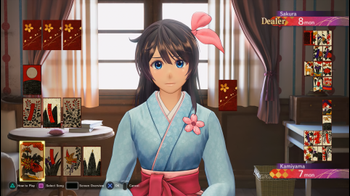
One of the most prevalent themes in Sakura Wars (2019) is what it means to pass on a legacy and entrust the next generation with the future you once sought after. The big returning character in this game is the new General Manager of the Grand Imperial Theater, Sumire Kanzaki. She was part of the original cast in the first Sakura Wars and she’s rightfully looked up to with the highest respects universally. In Sakura Wars (2019), the original Imperial Combat Revue is looked back upon as legends that once saved the entire world. Despite that past glory, Sumire continues to forge her own path as a strong-willed mentor and commander of the Imperial Combat Revue’s successors.
I think it’s so odd, yet so fascinating that the game beats itself up over this constant reflection of what the Imperial Combat Revue used to be and what it is now. While I appreciate the sharp self-awareness, Sakura Wars (2019) doesn’t do much to try and rise above it. I felt that the game played it way too safe when everything was said and done in the main plot. It felt more like an extended prologue, rather than taking a firm lead on manifesting its own destiny.
Nevertheless, Sakura Wars (2019) does a lot in getting both old and new players invested in this new generation for the series. As with all Sakura Wars games, the majority of their appeal hinges on the character work surrounding all the heroines of the combat revues. Sakura Wars (2019)’s main leads are comprised of Sakura Amamiya, a spunky swordswoman who has known Seijuro since childhood; Hatsuho Shinonome, a hot-headed shrine maiden that’s close friends with Sakura; Clarissa Snowflake, a kind-hearted bookworm possessing mysterious powers; Azami Mochizuki, a young self-proclaimed ninja with an appetite for manju; and Anastasia Palma, a top actress recruited by the Grand Imperial Theater staff to attract more visitors.
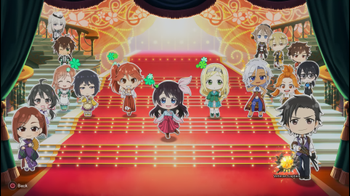
They’re all fairly interesting in their own ways. Sakura Wars (2019)’s chapters tend to focus on a character arc for each of them as ongoing circumstances push them to confront their weaknesses. The game does a good job introducing who they are, what they like, and what their shortcomings are, but Sakura Wars (2019) concludes before it gets the chance to fully flesh them out. It drip-fed just enough background info on them to spark my curiosity and instead of delving deeper into them, I feel the game intentionally leaves the door wide open to hopefully revisit their pasts again should a sequel ever come.
I’m not entirely sure if I’m supposed to be satisfied with where the game decided to end. Even though I think this new installment leaned too heavily on how the original Sakura Wars handled its finale, there are still a lot of crucial plot threads brought forth in that final stretch that’s simply left dangling. Thus, the game almost feels incomplete as a result and I’m crossing my fingers a hypothetical sequel addresses it head-on.
Another aspect of Sakura Wars (2019) that I admired, in regards to its characters, is its acknowledgment of weaving the wider world into its main narrative. A central focus point in it is the notion of a World Combat Revue tournament with multiple revues around the globe competing in it. You only get to meet a handful of them in the game itself, unfortunately, though it’s fascinating seeing how Sakura Wars (2019) even makes its rival combat revues charming. They all shine in their own ways and I found them more enjoyable than the standard, generic demonic opposition both in this game and past ones.
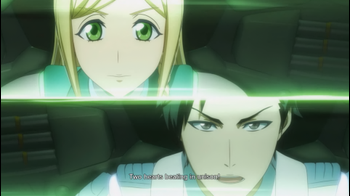
Their implementation isn’t without their flaws though. The combat revue tournament has two teams of three face head-to-head in a match to see who can eliminate the most enemies in a certain amount of time and the other revues you meet only put a face, voice, and personality to two of them. This leaves the third combatant on each opposing team to be a random nobody that’s never seen or heard from - which, frankly, sucks. Once again, another issue to tackle should a follow-up game ever come!
A Sakura Wars game cannot survive without an intriguing cast because an overwhelming amount of the game revolves around running to different parts of the theater and some outside locales engaging in conversations constantly. I found that Sakura Wars (2019) is largely successful in introducing what the Sakura Wars series is about once more. The ensemble in this entry has a lot of likable characters from the get-go; not all may warm up to Seijuro immediately, but they have reasonable doubts as to how this perfect stranger can whip the theater and combat revue back into shape. The game navigates a fine line determining Seijuro's intentions when getting to know someone; is his concern strictly coming from a place of his rank’s responsibility or is it because he’s genuinely a great guy that is willing to dive into meaningful interactions to ascertain how to proceed forward responsibly? Every Sakura Wars game tackles this to a certain extent, since that burden is put on the player.
The heart of the Sakura Wars series lies in its LIPS, the Live Interactive Picture System; a fancy term for how it handles dialogue choices. Players will encounter the LIPS myriads of times as they progress through the game. As conversations go on, sometimes a little circular knob will pop up with two to three options and a timer will fill up; simply select how you want to respond, should you choose to respond in the first place. Running the timer out will have Seijuro simply stay silent and sometimes, that might be the right call. Every response often has a unique impact in how a conversation plays out and corresponding sound jingles may pop up depending on if a person liked or disliked how you responded to them.
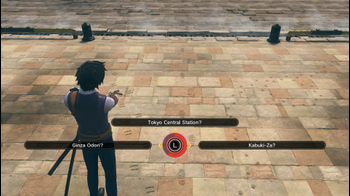
Sakura Wars (2019) incorporates later forms of LIPS too that were gradually introduced in later games. Instead of multiple choices, analog LIPS has a single response with a meter to determine how loudly a player wants to say it; some may appreciate Seijuro being more reserved, while others will get a kick out of his comical yelling. There are a few timed adventure segments as well, where a player has to accomplish a task in a limited time - whether it be finding someone’s kid or searching for a place to hide as someone barges in on you. It may seem simplistic at first, but some scenarios may catch people off-guard.
Although there are dozens of dialogue options throughout the game, they don’t have an effect on how the main story eventually plays out. The critical path remains untouched and your choices influence other auxiliary systems in Sakura Wars (2019). Repeatedly responding favorably to characters raises Seijuro’s trust with them. Building trust with side characters has a relatively minor effect on adding them to a cute stage diorama screen during intermissions, but has significant knock-on effects when it comes to relationships with the main heroines. For instance, there’ll be dating events available for each of the main heroines if you’ve raised their trust high enough. The girls also have different epilogue cutscenes that play after the credits which correspond with a certain late-game decision only available to those whom you’ve forged a high amount of trust with.
There are also intimate tête-à-tête instances with each of the girls; specific events in the main story may leave them extremely sad or distressed, so Seijuro spends some alone time with them to get their spirits back up. Think of these instances in parallel to the petting or face rubbing segments in Fire Emblem Fates. They’re relatively harmless, though I think they feel out of place in most of the contexts they’re brought in. It’s a lot of facetious sweet talk that doesn’t quite jive with the nature of the game. Tête-à-tête sections highlighted the awkwardness of seeing the 3DCG models of characters too, especially when they’re extremely up close to the camera. They’re usually fine when seen from a distance, but this tête-à-tête feature feels either misplaced or implemented in a slipshod fashion. Bath events make a return too, though they’re relatively stripped down and de-emphasized compared to their past iterations; they’re meant to be humorous, though they just stick out like sore thumbs in the end. Including some legacy winks and nods to veterans is a nice gesture, but many of Sakura Wars’s quirkier aspects haven’t aged well. Luckily, players can easily bypass tête-à-tête sections and bath events if it isn’t their cup of tea; how players choose to characterize Seijuro is up to them.
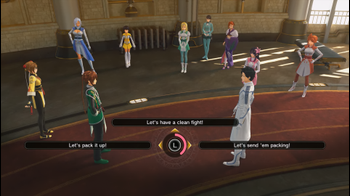
I was generally ok with Sakura Wars (2019)’s decision to move away from standard 2D artwork stills for character interactions though. Committing to a full 3DCG environment gives them a new element of liveliness in conversations. Characters now fully express themselves not only in spoken dialogue, but in their body language as well. Their models now move freely in a way that older games in the series couldn’t achieve and therefore, provide welcome enhancements to the flow of conversations. The cutscene cinematography also got bumped up a notch as a result too.
Sakura Wars (2019) doesn’t have the standard visual novel text boxes that its predecessors had. Characters continue to move within the environment as players speak to them, so the camerawork throughout character interactions was vastly improved to accommodate for that. It’s a relatively small touch in the grand scheme of things, but I appreciated the amount of effort put into varying up how scenes were framed and lit; fluctuations in camera angles, distances, and panning in tandem with soft light backdrops constructed a cozy atmosphere consistently.
This relaxing atmosphere pervades every part of Sakura Wars (2019) and a lot of it is due to Kohei Tanaka’s outstanding work composing its soundtrack. He has been one of the key components throughout the entire series that has made it memorable to fans around the world. His talent to seamlessly amp up the action with flashy, energetic arrangements to a mellow, homey tune has always been a high mark for the Sakura Wars series and Sakura Wars (2019) stays true to it featuring a lot of remixes that call back to the first game along with other new tracks.
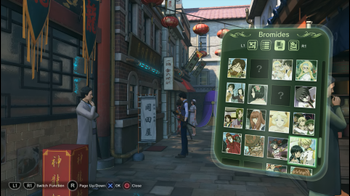
Character songs for the main heroines and several side characters are back as well, which play at key moments and special occasions. The opening song calls back to the iconic tune of the first Sakura Wars; even if its lyrics and performers have changed up, the spirit of the song remains intact. Another one of the Sakura Wars series’s mainstay features makes a comeback in Sakura Wars (2019) - the ‘on the next episode’ video clip when a chapter ends. Once again, small details between the cracks, but it adds up to deliver a wholesome experience.
Be that as it may, Sakura Wars (2019) does suffer from a problem that has plagued all mainline Sakura Wars games. Inconsistency in what lines are voiced and unvoiced is a prominent issue in this game. There will even be main story sequences that start out voiced, then abruptly become unvoiced once more characters enter the fray which completely threw me off multiple times. Of course, it’s a tremendous ask to have the entire game be voiced, though the very final stretch of Sakura Wars (2019) gives a slice of that pie as all the available character interactions at that time are completely voiced - and it was honestly awesome. This problem feels more noticeable and prevalent in this entry because it’s unchained from the traditional visual novel-esque frame into one that’s more dynamic and free-flowing in its cutscenes.
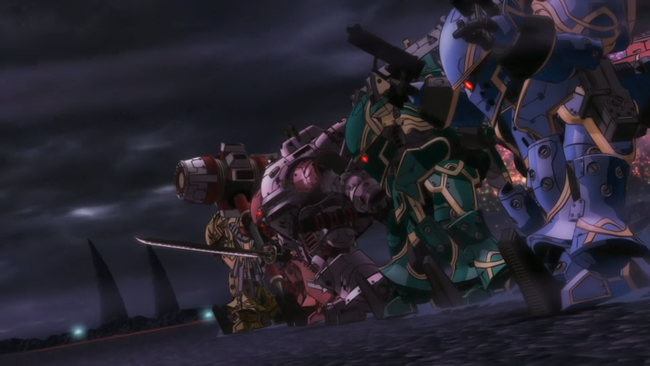
One of the biggest changes that distinguishes Sakura Wars (2019) from the rest of the games is that it is now an action RPG. The series first started out as a grid-based strategy RPG in the first two games and moved to an early prototype form of what Valkyria Chronicles eventually perfected. Both of these still operated on units taking their own turns though; that’s not the case with Sakura Wars (2019). It’s now similar to what you would see in Dynasty Warriors or Bayonetta, though your characters still pilot slick steam-powered robots in true Sakura Wars fashion.
During combat scenarios in Sakura Wars (2019), players navigate linear stages with some light platforming elements and sectioned off rooms that spew out enemy waves. There’ll be lots of little fodder enemies and bigger named ones. Battle mechanics in Sakura Wars games are relatively barebones when placed side-by-side to other games that specifically specialize in those genres. In Sakura Wars (2019), the combo system works much in the same vein as Dynasty Warriors mixing up light and heavy attacks as players fill up a meter underneath your lifebar to fire off a special attack. A dedicated dodge button can quickly get characters out of hairy situations, but dodging right before an attack hits will slow time down briefly - just like Bayonetta’s Witch Time mechanic. Players can dodge cancel their attacks, though the game’s controls aren't as responsive as modern action games. Seijuro’s trust level with his partner also affects a bond meter in battle that levels up mid-battle to boost the playable characters’ attack and defense. Doing well in battle will also raise it and subsequently, getting hit and doing poorly can de-level it.
I think this new combat system is serviceable at best, albeit it’s not as engaging as the Valkyria Chronicles-esque battle system that debuted in Sakura Wars 3: Is Paris Burning? to me. It’s far too repetitive and feels insufficiently thought out. As I mentioned earlier, the few brief tournament matches support up to three party members, but it normally only allows two party members most of the time; Seijuro is almost always forced into the party too, so there is very little time to play with who you want if you’re just normally progressing through the game.
Sakura Wars (2019) often depicts the Imperial Combat Revue working as a team to battle demons, yet it’s poorly reflected in gameplay because of that limitation of two party members - which is often Seijuro and someone else. There are a few times another character shows up to lend a hand very briefly only to disappear again; I rarely got the feeling I was working with the team as a united front. There is a way to replay past stages with different characters later in the game, though it is a massive chore that’s rather meaningless unless you’re on the hunt to accrue all the bromide collectibles.
Stage variety is severely lacking as well. Many of them take place in the demon realm with identical environments and layouts. Tournament matches possess their own unique map and objective. The occasional small raid battle that spontaneously pops up confines you to a super tiny city street. There are glimpses of more ambitious map designs in the final parts, though it’s a little too late by that point. Usually, the battles are never the focal point in Sakura Wars games, so they never overstay their welcome due to their brevity; nevertheless, the actual implementation of the action RPG mechanics in Sakura Wars (2019) is a drag. It just doesn’t seem fully baked in or well-realized.
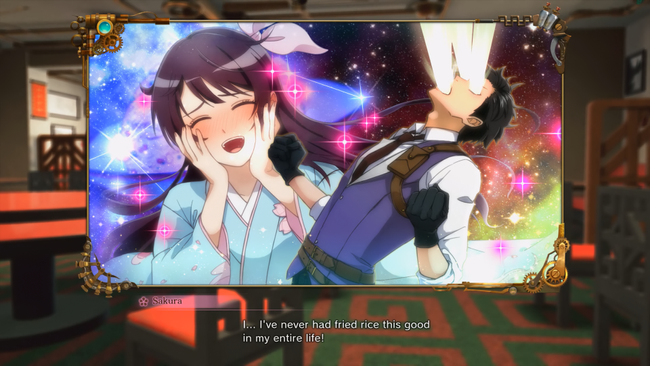
Sakura Wars (2019) is a fresh start for the long-dormant series and understands what made them great for the most part. It has its fair share of downfalls and still very much feels like a work-in-progress in de-rusting what aspects of the Sakura Wars franchise it wants to keep and let go. Despite my gripes with its leap to an action RPG for its small battle sections and how the overall story leaves off on an incomplete note, it manages to revitalize the incredible, comfortable atmosphere Sakura Wars games bring in their wake. There are refinements to be made around the edges, for sure, should a follow-up game ever come and I believe the foundation laid out in Sakura Wars (2019) is solid enough to pave the way for something truly special. The multimedia phenomenon that followed the original Sakura Wars seems to be rolling again for Sakura Wars (2019). It has already received a few collaborations with games like Phantasy Star Online 2 and Star Ocean: Anamnesis in Japan, along with a brand-new TV anime currently airing at the time of this review that takes place after the events of this game.
